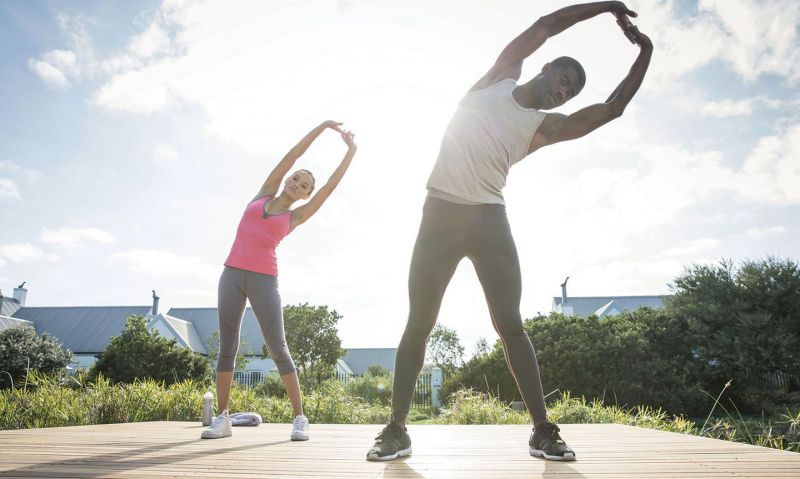
The benefits of regular stretching
Editor’s note: Before starting a new diet or strenuous physical activities, be sure to get clearance from your primary care physician.
Stretching is not just for athletes or active individuals. We all need to stretch to protect our mobility and independence. As we age, we lose flexibility from increased stiffness in joints and loss of elasticity in muscles, tendons and other connective tissues. Stretch on a regular, daily basis for the most benefit.
Here are 12 things to know about stretching:
1. It’s not a warmup. You may hurt yourself if you stretch cold muscles. Before stretching, warm up with light walking, jogging or biking at low intensity for five to 10 minutes. Stretch after your workout, when your muscles are warm. Instead of static stretching, do a “dynamic warmup.” This means performing movements similar to those in your physical activity at a low level, then gradually increasing the speed and intensity.
2. Focus on major muscle groups. Concentrate your stretches on your calves, thighs, hips, lower back, neck and shoulders. Make sure you stretch both sides.
3. Don’t bounce. Years ago, ballistic stretching was thought to be the best way to increase flexibility. Now, experts suggest you avoid bouncing unless these types of stretches have been recommended to you by a doctor or physical therapist.
4. Don’t aim for pain. Expect to feel tension when you stretch. But if it hurts, you’ve pushed too far. Back off to the point where you don’t feel any pain, then hold the stretch.
5. Be consistent. Stretching can be time-consuming, but you can achieve the most benefits by stretching regularly. Skipping stretching risks losing the benefits. If stretching helped you increase your range of motion, that range may decrease again if you stop stretching.
6. Use movement. Gentle movements, such as those in tai chi or yoga, can help you be more flexible in specific movements. These types of exercises can also help reduce falls in older adults.
7. Exercise caution. If you have a chronic condition or an injury, you might need to adjust your techniques. For example, if you have a strained muscle, stretching it may cause further harm. Get advice from your doctor or physical therapist.
8. Get help. Stretching doesn’t mean you can’t get injured. Consult a physician, physical therapist or trained fitness professional for help and specific stretches appropriate for your skill level.
9. Use specificity. Some evidence suggests that it’s helpful to do stretches involving the muscles used most in your sport or activity. If you play golf, for instance, stretch your shoulders and back as you’re more vulnerable to strains in those areas.
10. Reap the physical benefits. Regular stretching increases flexibility and blood flow while delaying the reduced mobility that can come with aging.
11. Heal your back. Stretching improves posture, and helps treat and prevent back pain.
12. Boost mental well-being. Muscles tend to tense up in response to physical and emotional stress. Focus on areas of your body where you tend to hold your stress, such as your neck, shoulders and upper back.
Army veteran Jennifer Campbell is a certified personal trainer with a master’s degree in nutrition education. She works with veterans and civilians, from elite athletes to those just starting their fitness journey. She is commander of the California American Legion’s 24th District.
